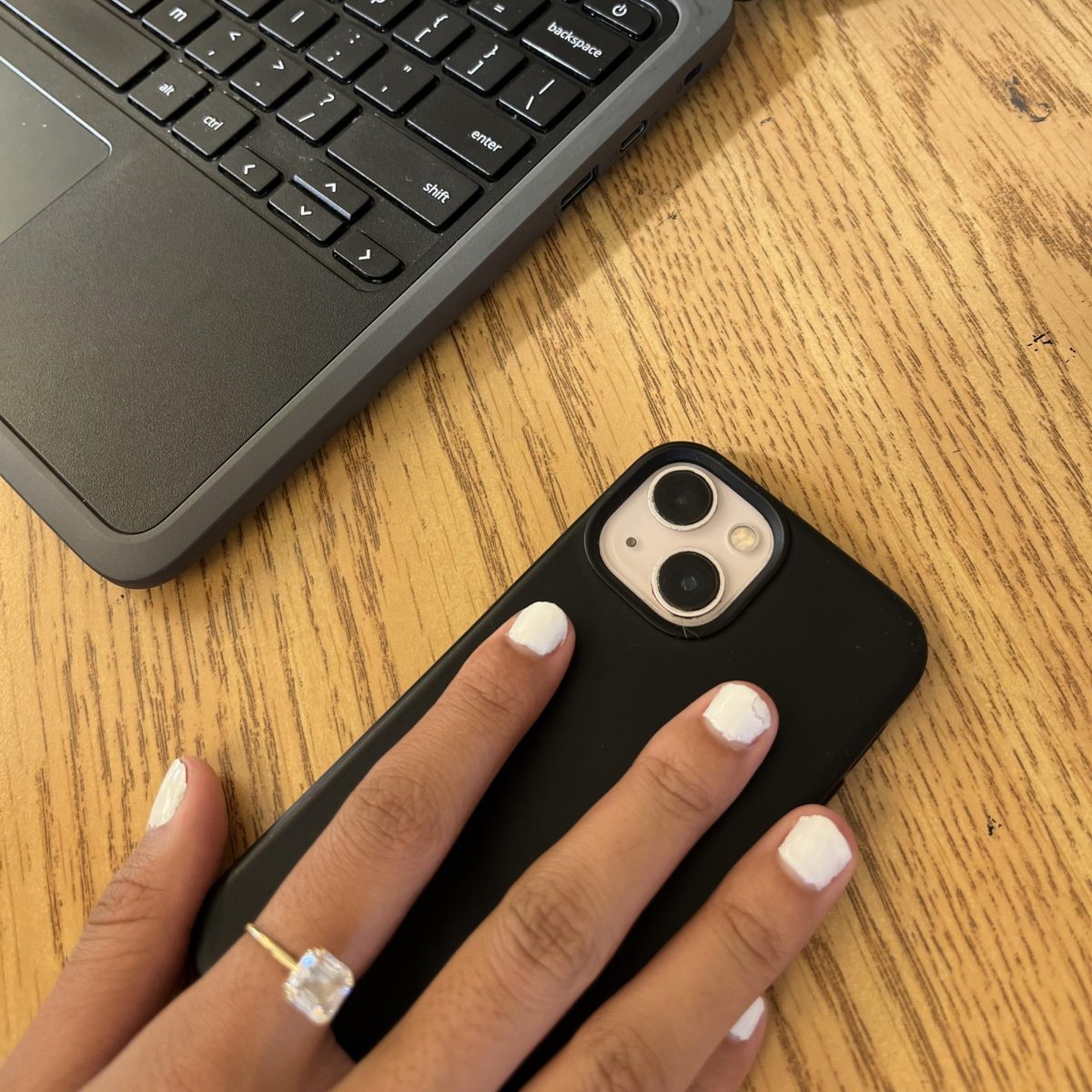On September 5th 2025, all sophomore iSchool students had to report to the Commons for an important assembly about some new school rules that have been enforced. iSchool is a small community. But as everyone is lined up to get inside the building on time it seems like a horde. Everyone yelling and laughing as more and more people start to clam into each other. Searching for their ids and pouches with the eyes of more than two teachers yearning for the green button to click.
And as the day comes to an end, the adrenaline rush among all students is clear. As soon as the clock hits 3:20 every student rushes out of their last period with two main exits, two unlocking bases and a place to be. And then the next day it happens all over again.
Yondr pouches started appearing in schools during 2022 to “enforce phone free spaces by securing students cellular devices that are magnetically locked and cannot be opened until a certain time of the day with a special unlocking base.”
Since then, Yondr pouches have been required in many schools worldwide and it is now a state law that phones cannot be used at all when school is in session. Students also now hold the responsibility of bringing their Yondr pouches to school everyday and securing their devices during the school day. This state law was bound to cause controversy on whether phones should or shouldn’t be allowed in a learning environment.
Some agree that there’s no valid reason for students to use their phone in school as it’s not beneficial for their education and most of the time a distraction, while others feel like phones are beneficial and can be used in many useful ways when it comes to learning and engaging in class. Truth is no matter how much people debate about it, there is no right or wrong answer. But there are positives , negatives and opinions about phone usage in school.
New advances in technology (like AI) are starting to upend education. These new technologies are expanding the accessibility of virtual tools used in the classroom. The rapid growth of technology being used in schools is producing an increasing amount of data on student engagement during activities in the classroom and online.
But teachers do worry that students will use AI to plagiarize their writing as over 50% of students a year use AI to write or edit their assignments. Students primarily use Ai to get work done in a faster and more timely manner , as well as improving the organization or quality of their writing. And as teachers usually do an originality run across mastery assignments, they highly encourage students to not use any AI tools as it can come with consequences that can be avoided.
“There were a few instances a couple years ago with students using ai but once we had a conversation with the student explaining why we don’t want them to use ai it was okay from then on so it wasn’t too bad. And so this year I’m having students hand write their writing and essays so they’re not really using computers right now for their writing,” says Mr. Mei a learning specialist at the iSchool.
Aside from plagiarism and cheating being used for assignments, 92% of teachers said that the internet has had a major impact on students accessibility for research, content and material. I asked students around the iSchool if when phones were allowed in school were they in any way effective or helpful throughout the school day.
“Yes, I have used my phone to get information for an assignment, for example when I’m in science I’m not really the best scientist, but I would use my phone a lot for questions that I have. We can’t always just use computers in class because it’s like they don’t work right all the time and also the internet is pretty slow sometimes in the school,” said Gilian, a sophomore at the iSchool.
“I think for us phones can still be helpful because sometimes the computers may be running down which is basically all the time here. The Wi-Fi is like never working so I feel like our phones can be used beneficially. I’ve never been distracted by it. Phones are quick and easy to use if I’m ever confused or need help. We don’t need our phones permanently but I feel like there can be situations where phones are useful,” said another sophomore, Autumn, who also attends iSchool.
Although students understand the advantages of using technology for quick and easy access throughout classes, incorporating a larger variety of technology in schools might not be financially considerate to the government’s budget.
It is true that the government needs to spend millions of dollars to equip schools annually, and technology is expensive. K-12 tech spending is expected to grow tremendously from now to 2032 jumping in market worth from $14.8 billion to $132.4 billion globally. As education is increasingly starting to rely on technology , schools and districts are starting to allocate and increase budgets to provide students with skills needed to excel during the school year.
Now, one of the main questions parents have about this new law is communication. How are kids supposed to communicate with family? Especially in case of an emergency. All schools are required to have a student’s emergency contact, as well as having an automated phone system.
“I think that when kids have their phones in emergencies it’s easier for false information to spread very quickly. The school also automatically sends out an email to everyone’s parents at the same time through Jupiter. We also know that some families don’t always speak English so we let them put in their chosen language through Jupiter and any email sent out will be in that given language,” said Ms. Leimsider, the assistant principal in this school, who sends out emails to the school community on a daily basis.
As parents’ main concern about the Yondr pouches consist of safety and accessibility, the DOE and the leaders of the iSchool seem to show communication skills and clarity when it comes to students safety during school hours. As mandated, all schools are required to have a student’s emergency contact , as well as having an automated phone system. These protocols are meant to lower these safety concerns.
While some argue that cellphones can be used as a learning tool there is evidence that supports this claim, while there’s also evidence that supports the argument that cellphones bring distractions and obstacles when it comes to learning and applying new material in the classroom. The debate on whether phones will help or hinder the learning process will continue as more claims and evidence is thrown into the fire.
Harvard college professor Pereira said, “Two things I try to share with my new teachers are, one, why is that student on the phone? What’s triggering getting on your cell phone versus jumping into our class discussion, or whatever it may be?”














